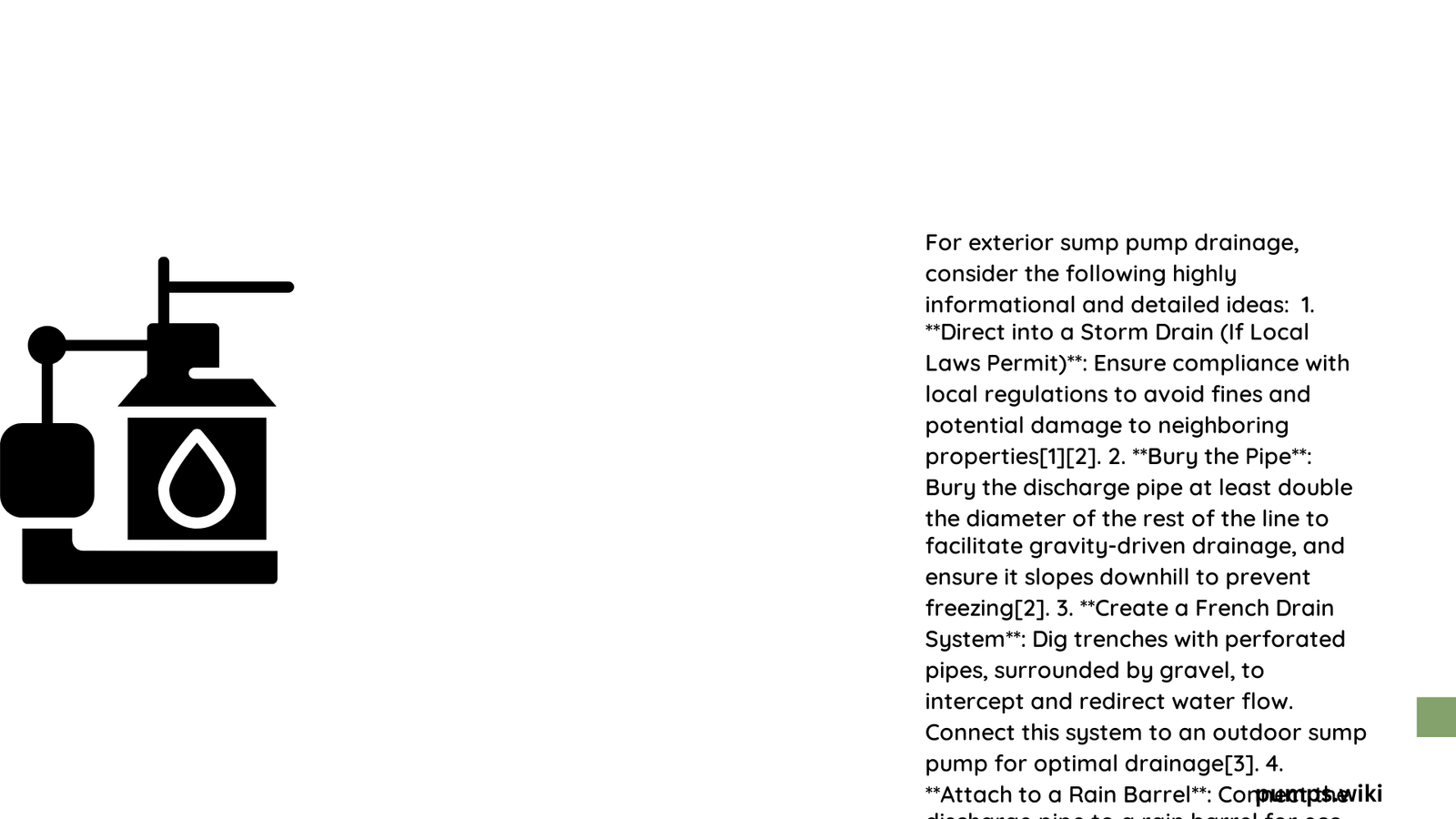Water management around residential properties requires strategic planning, and exterior sump pump drainage ideas offer critical solutions for preventing moisture-related structural damage. Homeowners facing persistent water accumulation challenges can leverage advanced drainage techniques that effectively redirect groundwater, protect foundation integrity, and maintain a dry, stable living environment through innovative sump pump systems and strategic landscape design.
What Are the Most Effective Exterior Sump Pump Drainage Strategies?
Understanding Drainage Fundamentals
Exterior sump pump drainage involves complex water management techniques designed to intercept, collect, and redirect groundwater away from residential structures. The primary objective is creating a comprehensive system that prevents water accumulation near foundations, mitigating potential structural damage and moisture-related issues.
Key Components of Successful Drainage Systems
French Drain Integration
- Trench Design: Excavate strategic drainage pathways
- Pipe Placement: Install perforated pipes with proper gradient
- Gravel Filling: Use crushed stone for optimal water filtration
| Drainage Component | Recommended Specifications |
|---|---|
| Trench Depth | 8-24 inches |
| Pipe Diameter | 4 inches |
| Slope Gradient | Minimum 1-2% downward |
Optimal Sump Pump Placement Techniques
Location Considerations
- Position sump pit within 4 feet of exterior basement wall
- Ensure minimum 30-inch pit depth
- Select pump with appropriate horsepower for water volume
Discharge Line Management
Critical Design Parameters
- Maintain discharge line length under 50 feet
- Use minimum 1.25-inch diameter piping
- Create positive slope away from foundation
- Implement check valve to prevent backflow
Advanced Drainage Solutions
Landscape Grading Strategies
- Create positive drainage away from structure
- Implement swales and berms
- Utilize topographical modifications
Pump Selection Criteria
Performance Metrics
- Zoeller M98: Half-horsepower pump
- Micro Bad Seed: Shallow trench compatibility
- Full Frame Bad Seed: Deep system performance
Water Table Considerations
Soil Type Evaluation
- Assess local geological conditions
- Determine groundwater movement patterns
- Design system accounting for seasonal variations
Installation Best Practices
Essential Tools
- Trenching equipment
- Laser level
- Perforated pipe
- Gravel/drainage aggregate
- Sump pump
- Electrical connections
Maintenance Recommendations
Regular System Checks
- Inspect drainage pathways quarterly
- Clean debris from French drain system
- Test pump functionality annually
- Monitor discharge line integrity
Cost-Effective Implementation
Budget-Conscious Approaches
- Prioritize critical drainage areas
- Implement phased installation
- Consider DIY versus professional services
Conclusion

Successful exterior sump pump drainage requires comprehensive planning, understanding local hydrology, and implementing strategic water management techniques. Homeowners can protect their properties by adopting these systematic approaches to groundwater control.
